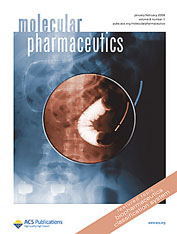Differential scanning calorimetry (DSC), broadband dielectric (BDS), and Fourier transform infrared (FTIR) spectroscopies as well as theoretical computations were applied to investigate inter- and intramolecular interactions between the active pharmaceutical ingredient (API) indomethacin (IMC) and a series of acetylated saccharides. It was found that solid dispersions formed by modified glucose and IMC are the least physically stable of all studied samples. Dielectric measurements showed that this finding is related to neither the global nor local mobility, as the two were fairly similar. On the other hand, combined studies with the use of density functional theory (DFT) and FTIR methods indicated that, in contrast to acetylated glucose, modified disaccharides (maltose and sucrose) interact strongly with indomethacin. As a result, internal H-bonds between IMC molecules become very weak or are eventually broken. Simultaneously, strong H-bonds between the matrix and API are formed. This observation was used to explain the physical stability of the investigated solid dispersions. Finally, solubility measurements revealed that the solubility of IMC can be enhanced by the use of acetylated carbohydrates, although the observed improvement is marginal due to strong interactions.
